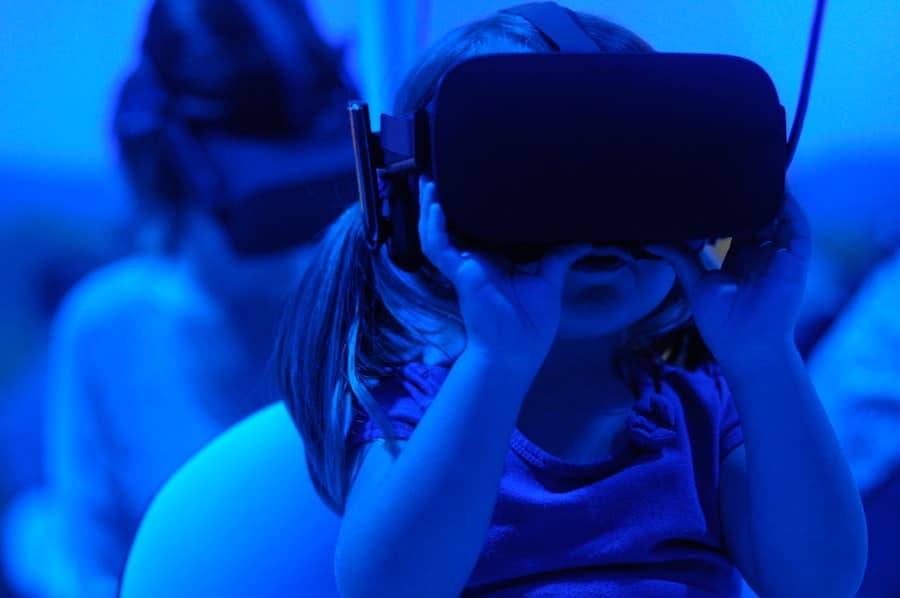Mixed reality (MR) represents a convergence of the physical and digital worlds, allowing users to interact with both real and virtual elements in a seamless manner. This technology has gained traction in various sectors, particularly in education, where it has transformed traditional learning paradigms. Virtual classes, which have become increasingly prevalent due to advancements in technology and the global shift towards online education, provide an ideal platform for the integration of mixed reality.
By merging the immersive qualities of virtual environments with the tangible aspects of the real world, mixed reality enhances the educational experience, making it more engaging and interactive. In the context of virtual classes, mixed reality offers a unique opportunity to foster collaboration among students, even when they are physically apart. This is particularly relevant in group projects, where teamwork and communication are essential for success.
The ability to visualize complex concepts, manipulate 3D models, and engage in shared experiences can significantly enhance students’ understanding and retention of information. As educators seek innovative ways to improve learning outcomes, mixed reality stands out as a powerful tool that can bridge the gap between theoretical knowledge and practical application.
Key Takeaways
- Mixed reality combines elements of both virtual and augmented reality to create immersive experiences in virtual classes.
- Mixed reality in group projects allows for enhanced collaboration, creativity, and problem-solving skills among students.
- Communication in mixed reality environments is more natural and interactive, leading to better engagement and understanding among participants.
- Immersive experiences in virtual classes help students to better retain information and apply their knowledge in real-world scenarios.
- Challenges and limitations of mixed reality in group projects can be overcome through proper training, technical support, and clear guidelines for usage.
The Benefits of Mixed Reality in Group Projects
One of the most significant advantages of mixed reality in group projects is its ability to facilitate experiential learning. Students can engage with content in a hands-on manner, which is often more effective than passive learning methods. For instance, in a science class, students can use mixed reality to conduct virtual experiments that would be impossible or impractical in a traditional classroom setting.
This not only deepens their understanding of scientific principles but also encourages critical thinking and problem-solving skills as they navigate challenges within the virtual environment. Moreover, mixed reality fosters creativity and innovation among students working on group projects. By providing tools that allow for the visualization of ideas and concepts, students can brainstorm and collaborate more effectively.
For example, architecture students can create 3D models of their designs and manipulate them in real-time, allowing for immediate feedback and iteration. This dynamic process encourages a more collaborative atmosphere where students feel empowered to share their ideas and contribute to the project’s development. The immersive nature of mixed reality also helps to maintain engagement, as students are more likely to be invested in a project that allows them to interact with their work on multiple levels.
Collaboration and Communication in Mixed Reality Environments
Effective collaboration is crucial for the success of any group project, and mixed reality environments provide unique tools that enhance communication among team members. In these immersive settings, students can interact with each other as if they were in the same physical space, regardless of their actual locations. This sense of presence can lead to more meaningful interactions and a stronger sense of community among participants.
For instance, using avatars or holograms, students can engage in discussions, share ideas, and provide feedback in real-time, mimicking the dynamics of face-to-face communication. Additionally, mixed reality platforms often include features that support collaborative work, such as shared virtual whiteboards or 3D modeling tools. These resources enable students to visualize their ideas collectively and make adjustments on the fly.
For example, during a group project focused on environmental science, students could collaboratively analyze data sets represented in 3D space, allowing them to identify patterns and draw conclusions together. This level of interactivity not only enhances understanding but also builds essential teamwork skills that are vital for future professional endeavors.
The Role of Immersive Experiences in Virtual Classes
Immersive experiences play a pivotal role in enhancing the educational value of virtual classes. By engaging multiple senses, mixed reality can create a more impactful learning environment that captures students’ attention and fosters deeper understanding. For instance, history classes can benefit from immersive experiences that transport students to significant historical events or locations.
By virtually walking through ancient ruins or witnessing pivotal moments in history, students can develop a more profound connection to the material being studied. Furthermore, immersive experiences can cater to diverse learning styles, accommodating visual, auditory, and kinesthetic learners alike.
This multifaceted approach not only enhances comprehension but also allows students to engage with content in ways that resonate with their individual preferences. For example, a biology class could utilize mixed reality to explore human anatomy by allowing students to dissect virtual models while listening to detailed explanations from instructors or experts in the field.
Overcoming Challenges and Limitations of Mixed Reality in Group Projects
Despite its numerous advantages, implementing mixed reality in group projects is not without challenges. One significant barrier is the accessibility of technology. Not all students may have access to the necessary devices or high-speed internet connections required for an optimal mixed reality experience.
This digital divide can lead to disparities in participation and engagement among students, ultimately affecting group dynamics and project outcomes. Educators must consider these limitations when designing mixed reality experiences and strive to provide equitable access for all students.
While mixed reality offers exciting possibilities, it may also require students and educators to adapt to unfamiliar tools and platforms. This transition can be daunting for some individuals who may feel overwhelmed by the complexity of the technology. To mitigate this issue, educators should provide comprehensive training sessions and ongoing support to ensure that all participants feel comfortable navigating mixed reality environments.
By fostering a culture of experimentation and exploration, educators can help students embrace these new tools as valuable assets rather than obstacles.
Case Studies and Examples of Successful Group Projects in Mixed Reality
Several educational institutions have successfully integrated mixed reality into their curricula, showcasing its potential for enhancing group projects. One notable example is the University of Illinois at Urbana-Champaign’s use of mixed reality in engineering courses. Students collaborated on projects involving complex mechanical systems by utilizing augmented reality (AR) tools that allowed them to visualize components in 3D space.
This hands-on approach not only improved their understanding of engineering principles but also fostered teamwork as they worked together to troubleshoot design challenges. Another compelling case study comes from the University of Southern California’s School of Cinematic Arts, where students used mixed reality technology to create immersive storytelling experiences. In groups, they developed interactive narratives that combined live-action footage with virtual elements.
This project required extensive collaboration among students with diverse skill sets, including writing, directing, and technical production. The result was a series of innovative short films that pushed the boundaries of traditional storytelling while emphasizing the importance of teamwork and communication.
Best Practices for Implementing Mixed Reality in Virtual Classes
To maximize the benefits of mixed reality in virtual classes, educators should adhere to several best practices when designing group projects. First and foremost, it is essential to establish clear objectives for each project. Educators should define what skills or knowledge students are expected to gain through their participation in mixed reality experiences.
By aligning project goals with learning outcomes, instructors can ensure that students remain focused and engaged throughout the process. Additionally, providing structured guidance is crucial for helping students navigate mixed reality environments effectively. Educators should offer tutorials or workshops that familiarize students with the technology before they embark on group projects.
This preparation will empower students to utilize mixed reality tools confidently and creatively. Furthermore, incorporating regular check-ins or feedback sessions during the project can help maintain momentum and address any challenges that arise.
The Future of Mixed Reality in Education and Group Projects
As technology continues to evolve at a rapid pace, the future of mixed reality in education appears promising. With advancements in hardware and software capabilities, we can expect even more sophisticated tools that enhance collaborative learning experiences. For instance, developments in haptic feedback technology may allow students to physically interact with virtual objects, further blurring the lines between physical and digital realms.
Moreover, as educational institutions increasingly embrace online learning models, mixed reality will likely play a central role in bridging gaps between remote learners. The potential for global collaboration among students from diverse backgrounds presents an exciting opportunity for cross-cultural exchange and shared learning experiences. As educators continue to explore innovative ways to integrate mixed reality into their curricula, we can anticipate a transformative shift in how group projects are approached—one that prioritizes engagement, collaboration, and experiential learning at its core.
In addition to utilizing mixed reality for group projects in virtual classes, students can also benefit from using the NeuronWriter tool for content SEO optimization. This tool, as discussed in the article “NeuronWriter Review: The Best Content SEO Optimization Tool”, can help students enhance their writing skills and ensure that their work is easily discoverable online. By combining the use of mixed reality for collaborative projects and NeuronWriter for content optimization, students can maximize their learning potential and improve their academic performance.
FAQs
What is mixed reality?
Mixed reality (MR) is a technology that combines elements of both virtual reality (VR) and augmented reality (AR) to create an interactive and immersive environment where physical and digital objects coexist and interact in real time.
How does mixed reality enhance group projects in virtual classes?
Mixed reality allows students to collaborate and interact with each other and digital content in a shared virtual space, regardless of their physical location. This enhances group projects by enabling real-time communication, collaboration, and interaction, leading to a more engaging and effective learning experience.
What are the benefits of using mixed reality in virtual classes for group projects?
Some benefits of using mixed reality in virtual classes for group projects include improved collaboration and communication, enhanced engagement and motivation, increased creativity and innovation, and the ability to simulate real-world scenarios and environments for a more practical learning experience.
What are some examples of mixed reality applications for group projects in virtual classes?
Examples of mixed reality applications for group projects in virtual classes include virtual collaboration platforms, 3D modeling and design tools, interactive simulations and scenarios, and virtual reality field trips and experiences.
What are the potential challenges of using mixed reality in virtual classes for group projects?
Challenges of using mixed reality in virtual classes for group projects may include technical issues, accessibility and affordability of MR devices, learning curve for students and educators, and the need for effective integration of MR technology into the curriculum.



